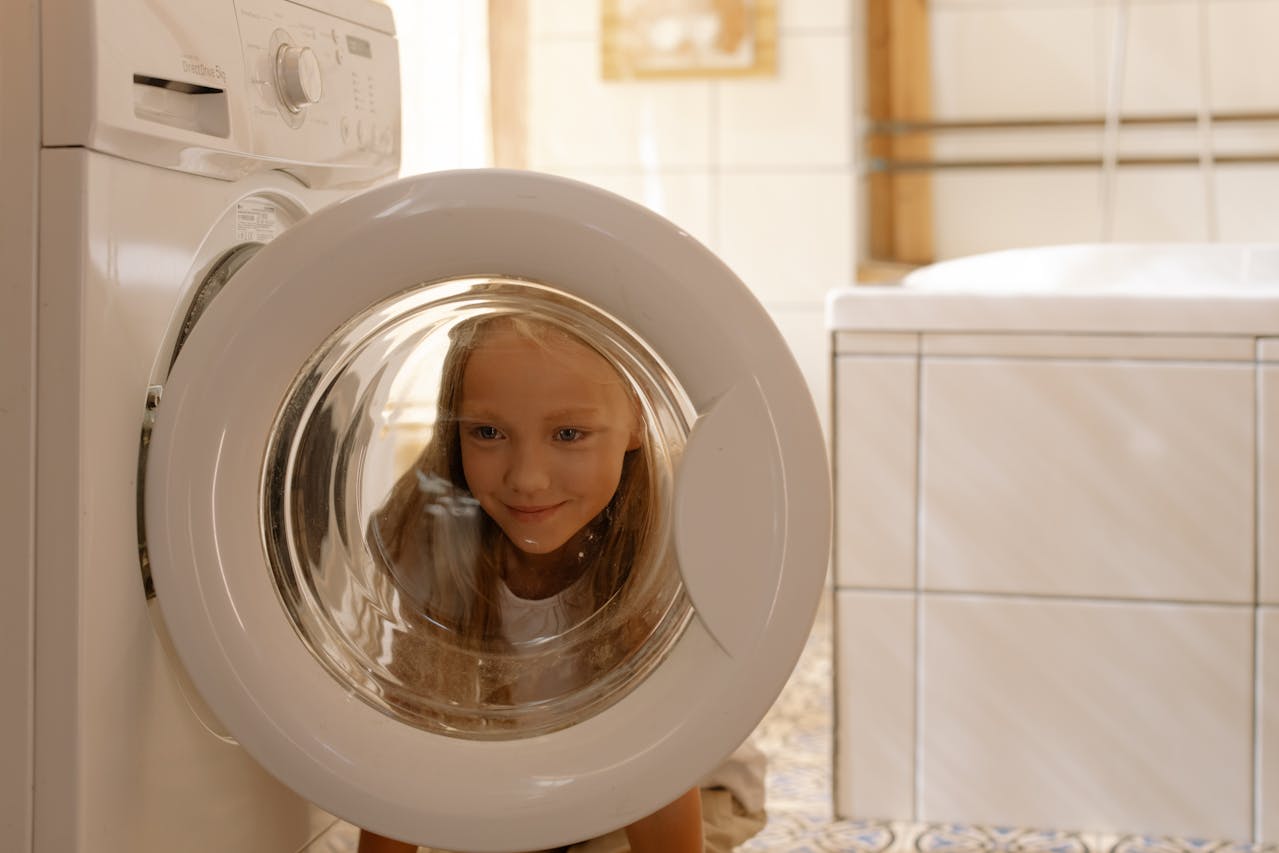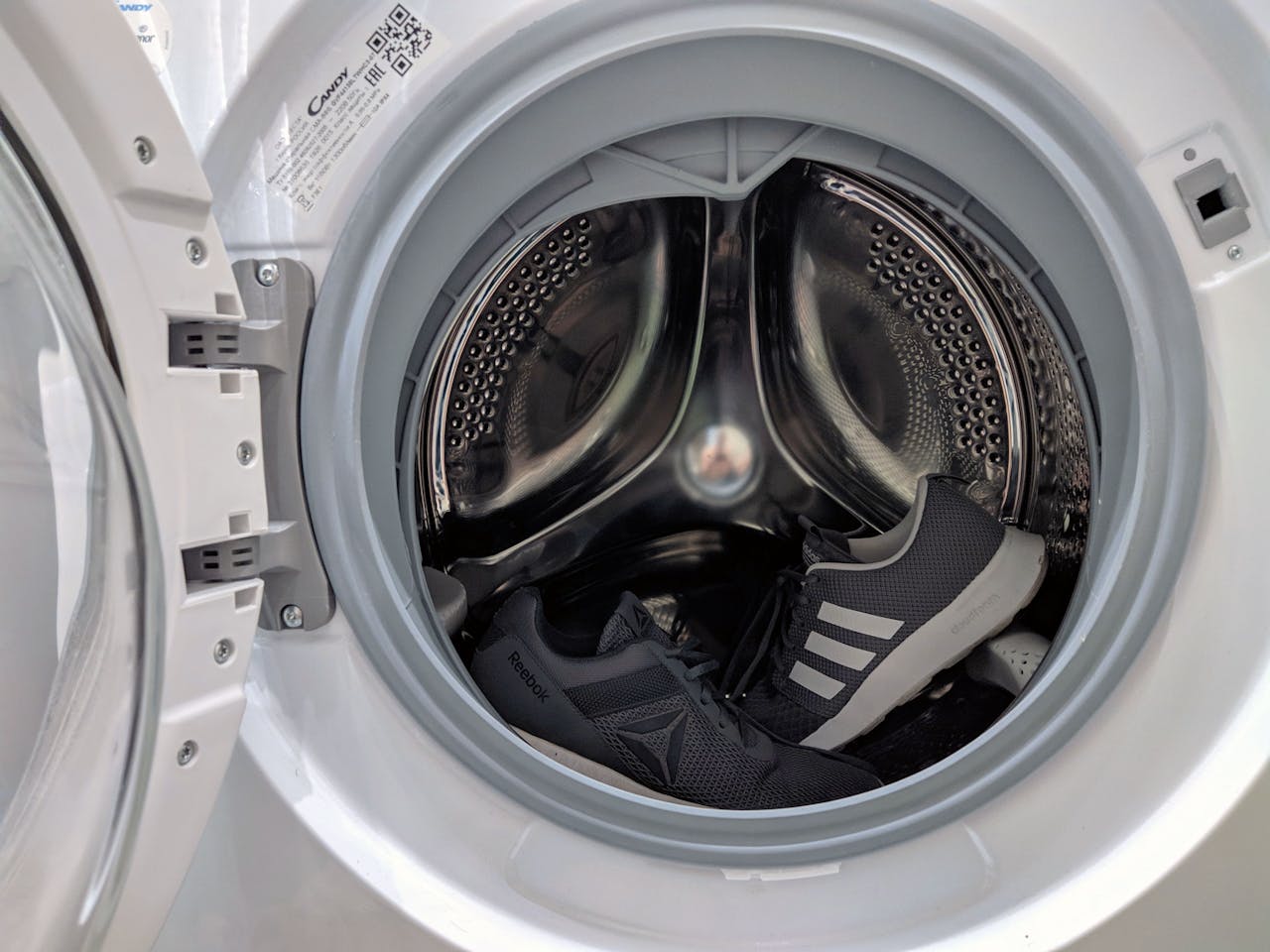It is strange how often we forget that the appliances we use to clean themselves must be cleaned regularly. Think of all the dirt that comes off all the clothes washed in the machine over a few months. Yes, most of it is flushed out with rinsing water, but some dirt will always remain, which will soon cause odours that will transfer to the clothes being washed. Here is a simple procedure you can use to clean your washing machine. Even if cleaning the appliance is part of the work of your domestic cleaning maid, knowing how to do it yourself in an emergency is always helpful.

Cleaning The Exterior
The outside of the washing machine is an easy bit to clean. The outside tends to get grubby very quickly, usually because the lid(or the top of the machine in the case of a front loader) is a good place to put the washing basket to save a bit of floor space, and cats seem to like jumping onto it (at least mine do). And because the laundry is usually where people wash down the grubby stuff, the top of the washing machine is often where scrubbing brushes, paint brushes, and the like get popped down “just for now.”
It’s also easy to clean down, too. Just give it a good wipe with warm, soapy water all over. Then, toss the rag you have just used into the basket, ready to be washed. The buttons and dials are often a bit grubbier. You may have to use a bit of baking soda to rub at the flatter bits, or else get stuck in with a soft toothbrush (the latter is a must if you have an older style washing machine with switches and dials rather than the electronically controlled push-button type). A microfibre cloth such as an Enjo cloth can also do the trick.
As you clean the exterior, take a moment to inspect the hoses. While the hoses connecting the taps to the washing machine are generally durable, it’s always good to check for any signs of wear and tear. This simple precaution can help you feel secure about the condition of your machine.

Cleaning The Interior
Now for the inside of the washing machine. This is usually a lot cleaner, especially as it has large amounts of soapy water swooshing inside it at least once a week – once a day is more like it in an average household. It won’t need much cleaning unless you’ve got it clogged up with sand and mud. This can happen if you’ve washed the towels after a trip to the seaside or if family members have got completely plastered with mud via gardening or rugby. If this muck lingers inside the tub, it will get onto the next load put through the machine. Grass clippings are another common thing that gets washed offload A and sprinkles overload B, with tissues left in pockets being another.
- Add two cups of vinegar to the water and allow the machine to run through a complete wash cycle. If the vinegar smell is still strong, run an additional rinse cycle.
- This will take care of the odour. The next thing is to remove the stains.
- Once again, fill the machine with hot water at the heaviest load setting and add two cups of normal household bleach.
- Let the full wash and rinse cycle run.
- It’s a good idea to do this even if you don’t see any stains—since the drum’s interior is dark, you may not notice developing stains until it is too late.
- After completing both these cycles, run a final wash and rinse cycle with plain hot water. This will remove any remaining bleach residue.
- People often overlook the dispensers. Remove the fabric softener, bleach and detergent dispensers and soak them in warm water.
- Once the built-up deposits are loose, wipe them away.
- Use a general house cleaning product and cotton swabs to clean the corners and hard-to-reach areas.
- Refit them.
Washing Machine Prevention Tips – Better Be Safe Than Sorry
Prevention is better than the cure, so before you put sandy towels or grassy trousers worn while using an edge trimmer into the machine, take them outside and give them a good shake to get the worst out. If it’s too late to prevent the problem or you have had to wash rugby gear, your best bet is to pop a bit of water into the machine and put it onto the spin cycle. This should get rid of the excess gunk.
Larger items can get caught in the tub if left in pockets, and consider yourself lucky if they do. If you’re unlucky, they’ll go out and get stuck in the pump mechanism, leaving you with a tub full of horrible, heavy clothes and water. Hair clips are the worst offenders for getting stuck in pumps (it happened twice to me). Check the pockets before you wash things. And if you find coins in the machine, consider them a tip!
You will also need to clean out the lint trap periodically. This differs from machine to machine, so I can’t tell you exactly how to do it. But make sure you do.
The biggest cleaning job you will have to do inside a washing machine is if you have made the once-in-a-lifetime-and-never-again mistake of going away on holiday and leaving damp clothes inside the machine. This is also known as a mildew factory. The clothes left inside will probably be nearly ruined– the choice is yours; you may want to try rescuing some items with sunlight, vinegar and lemon juice. But you must get rid of lingering mould and the horrible smell. Empty the machine, spray copious amounts of vinegar inside and give it a good rub down. Leave it for a bit, then put some water into the machine and put it through the spin cycle to rinse it. Vow, never leave washing in the machine when you go away again.

